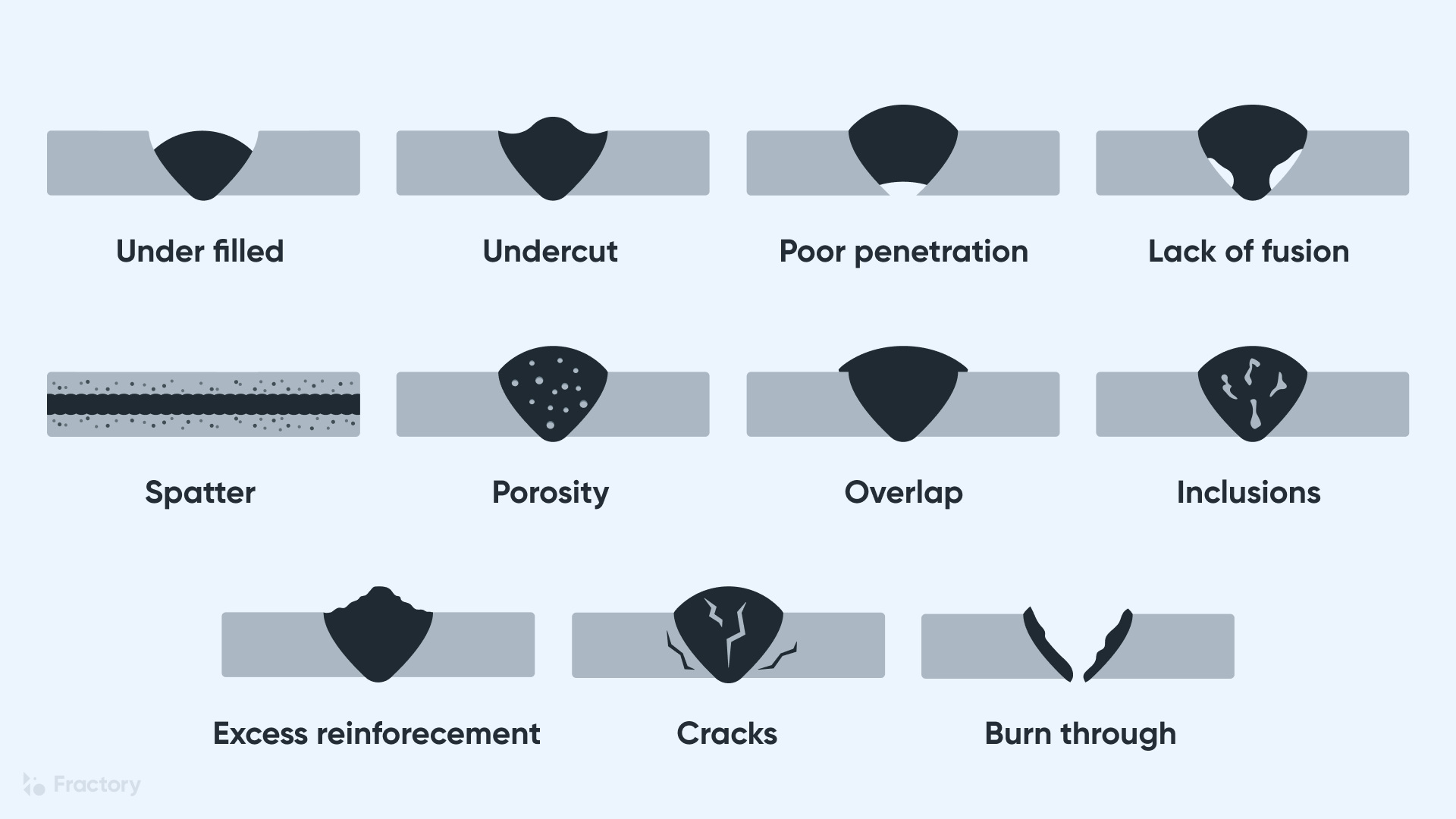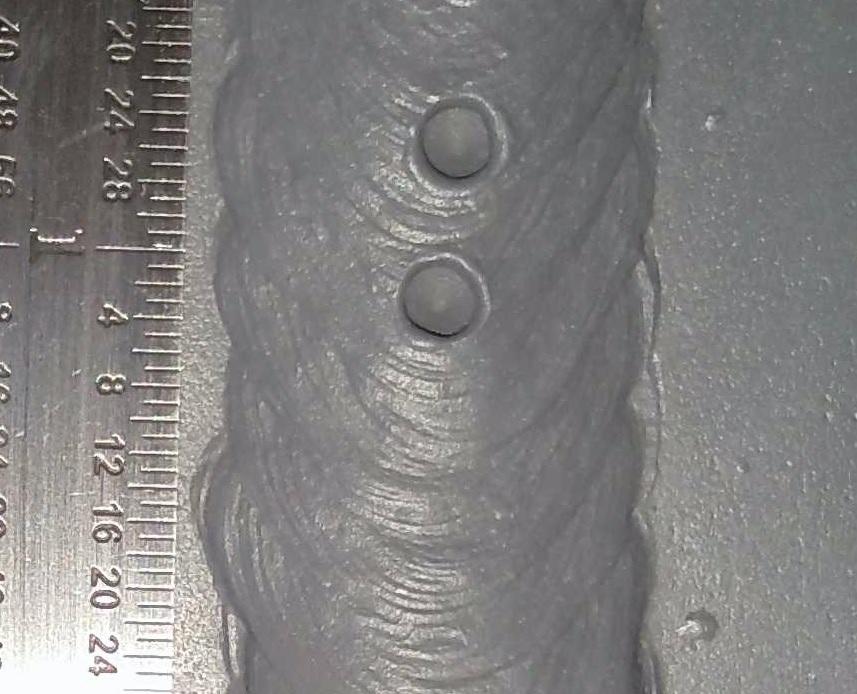What is Porosity in Welding: Recognizing Its Reasons and Enhancing Your Skills
Untangling the Secret of Porosity in Welding: Tips for Reducing Issues and Optimizing Quality
In the complex globe of welding, porosity continues to be a relentless obstacle that can significantly affect the high quality and stability of bonded joints. As we delve into the midsts of porosity in welding, revealing the keys to its avoidance and control will certainly be critical for professionals seeking to understand the art of high-grade weldments.
Understanding Porosity in Welding
Porosity in welding, an usual concern run into by welders, describes the visibility of gas pockets or voids in the welded product, which can endanger the honesty and high quality of the weld. These gas pockets are normally caught during the welding process as a result of numerous aspects such as incorrect shielding gas, infected base products, or inaccurate welding parameters. The development of porosity can deteriorate the weld, making it vulnerable to splitting and corrosion, eventually resulting in structural failings.
By acknowledging the value of keeping proper gas protecting, making certain the cleanliness of base products, and optimizing welding setups, welders can dramatically reduce the likelihood of porosity formation. In general, a detailed understanding of porosity in welding is essential for welders to create top notch and durable welds.

Usual Causes of Porosity
When inspecting welding processes for potential top quality concerns, recognizing the typical reasons of porosity is necessary for maintaining weld integrity and preventing architectural failings. Porosity, identified by the visibility of tooth cavities or spaces in the weld metal, can significantly jeopardize the mechanical residential properties of a welded joint.
Furthermore, welding at improper parameters, such as exceedingly high travel speeds or currents, can produce extreme disturbance in the weld pool, trapping gases and creating porosity. By addressing these usual causes via proper gas shielding, material preparation, and adherence to optimal welding specifications, welders can minimize porosity and improve the top quality of their welds.
Methods for Porosity Avoidance
Executing efficient safety nets is essential in reducing the incident of porosity in welding processes. One method for porosity avoidance is guaranteeing appropriate cleaning of the base steel prior to welding. Pollutants such as oil, oil, corrosion, and paint can lead to porosity, so comprehensive cleaning making use of appropriate solvents or mechanical approaches is vital.

Making use of high-quality filler materials and securing gases that are suitable for the base steel and welding process can significantly decrease the risk of porosity. Additionally, maintaining correct welding criteria, such as voltage, present, travel speed, and gas flow price, is crucial for porosity avoidance.
Additionally, employing proper welding techniques, such as maintaining a regular traveling rate, electrode angle, and arc size, can help protect against porosity (What is Porosity). Ample training of welders this page to guarantee they adhere to finest practices and top quality control treatments is likewise necessary in minimizing porosity defects in welding

Best Practices for High Quality Welds
Guaranteeing adherence to industry standards and correct weld joint preparation are basic elements of accomplishing consistently high-quality welds. In addition to these fundamental steps, there are numerous best practices that welders can apply to additionally improve the quality of their welds. One secret practice is keeping appropriate cleanliness in the welding location. Contaminants such as oil, grease, corrosion, and paint can adversely impact the top quality of the weld, bring about defects. Completely cleansing the work surface and surrounding location prior to welding can help alleviate these issues.
One more best technique is to very carefully select the suitable welding specifications for the specific materials being joined. This consists of establishing the right voltage, existing, travel speed, and shielding gas flow price. Appropriate criterion selection makes sure ideal weld penetration, blend, and general top quality. In addition, making use of high-quality welding consumables, such as electrodes and filler metals, can dramatically influence the final weld high quality. Purchasing costs consumables can cause more powerful, much more resilient welds with fewer flaws. By adhering to these ideal techniques, welders can consistently produce top quality welds that meet market criteria and surpass client expectations.
Significance of Porosity Control
Porosity control plays an important function in making certain the honesty and quality of welding joints. Porosity, defined by the visibility of tooth cavities or voids within the weld metal, can dramatically jeopardize the mechanical homes and structural stability of the weld. Excessive porosity compromises the weld, making it a lot more at risk to splitting, rust, and overall failing under operational lots.
Efficient porosity control is necessary for keeping the wanted mechanical residential properties, such these details as stamina, ductility, and sturdiness, of the welded joint. What is Porosity. By decreasing porosity, welders can boost the general quality and reliability of the weld, ensuring that it fulfills the performance demands of the intended application
Moreover, porosity control is essential for achieving the preferred visual appearance of the weld. Extreme porosity not just damages the weld but also interferes with its aesthetic appeal, see this page which can be essential in markets where aesthetics are necessary. Proper porosity control methods, such as using the proper protecting gas, regulating the welding criteria, and ensuring appropriate tidiness of the base products, are necessary for generating premium welds with minimal defects.

Verdict
In final thought, porosity in welding is an usual defect that can compromise the high quality of the weld. It is vital to regulate porosity in welding to make certain the stability and stamina of the final product.